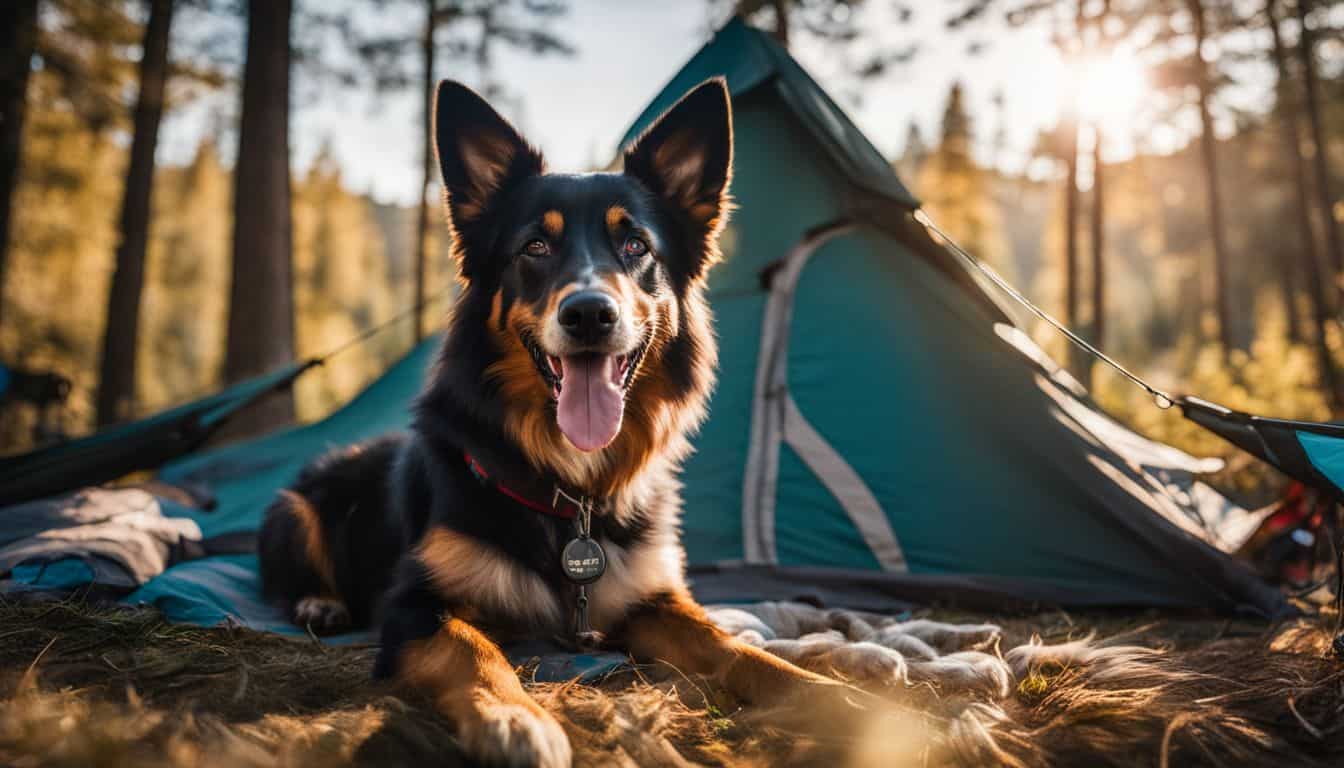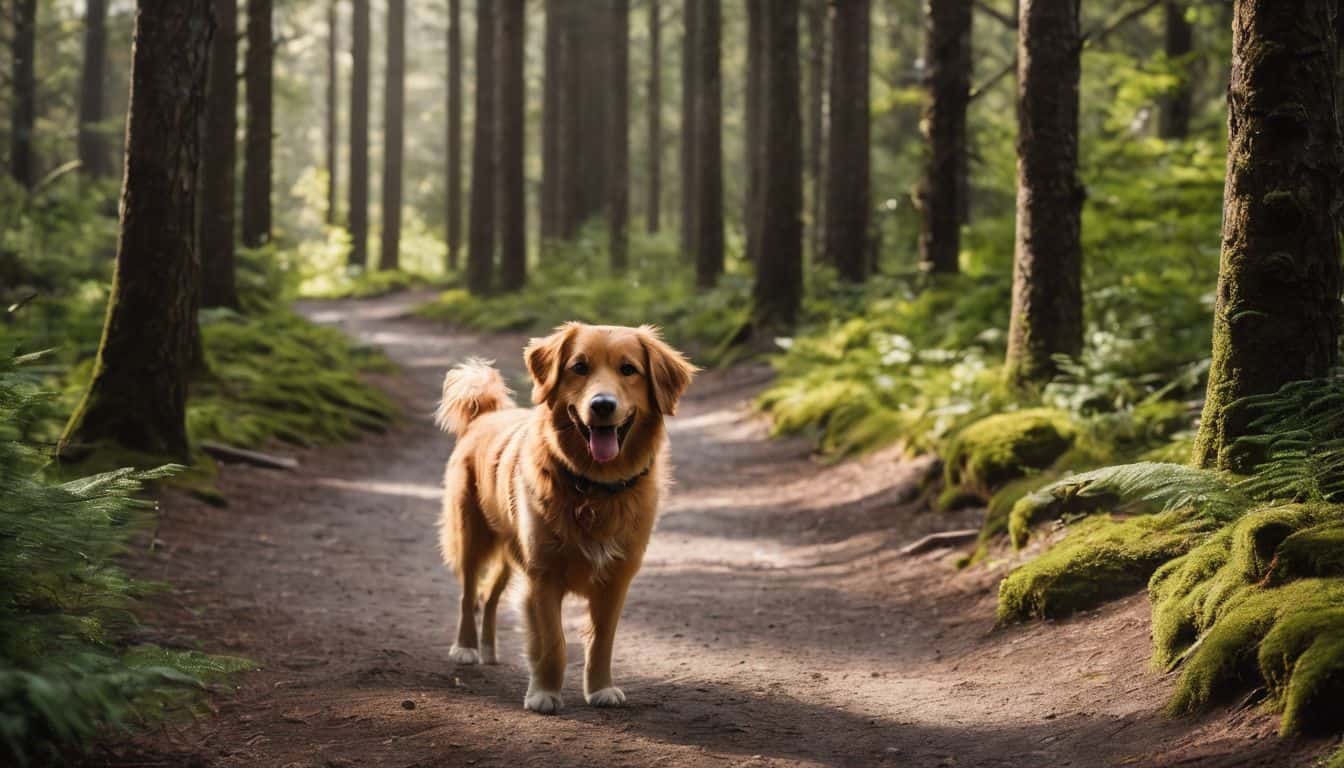Camping with your canine companion can be an incredibly rewarding experience, offering a unique opportunity to bond with your furry friend while enjoying the great outdoors. However, to ensure a successful and enjoyable trip for both you and your dog, careful planning and preparation are essential. This comprehensive guide will walk you through everything you need to know to make your camping adventure with your four-legged friend a memorable one.
Choosing a Dog-Friendly Campsite
The first step in planning a successful camping trip with your dog is selecting an appropriate campsite. Not all campgrounds welcome pets, so it’s crucial to do your research beforehand. Look for campgrounds that explicitly state they are dog-friendly and take the time to review their specific pet policies. Some campgrounds may have restrictions on breed, size, or the number of dogs allowed per site.
When choosing a campsite, consider amenities that will make your stay more comfortable for both you and your dog. Look for campgrounds that offer designated dog areas or have nearby hiking trails suitable for pets. It’s also important to consider the terrain and weather conditions of the campsite. If your dog isn’t used to rugged terrain or extreme temperatures, you may want to choose a more moderate location for your first few trips.

Essential Gear for Canine Campers
Packing the right gear for your dog is crucial for a comfortable and safe camping experience. Here’s a list of essential items to bring:
- Collapsible water and food bowls for easy storage and transport.
- Plenty of food and treats to keep your dog well-fed throughout the trip.
- A sturdy leash and harness for walks and hikes.
- Poop bags for cleaning up after your dog.
- A comfortable dog bed or blanket for sleeping.
- A portable first aid kit specifically designed for pets.
- An LED collar or light for nighttime visibility and safety.
Remember, it’s always better to overpack than to find yourself without a crucial item in the middle of your camping trip.
Preparing Your Dog for Camping
Before embarking on your camping adventure, it’s important to train your dog for camping. This preparation can make a significant difference in how well your dog adapts to the camping environment. Start by ensuring all vaccinations are up-to-date and that your dog is comfortable with basic obedience commands.
Gradually introduce your dog to camping equipment at home. Let them explore the tent, sleeping bags, and other gear in a familiar environment. This can help reduce anxiety when they encounter these items in the campsite. Consider taking short trial camping trips before attempting longer adventures. This allows both you and your dog to get accustomed to the camping routine and identify any potential issues.
Safety Considerations
Safety should be your top priority when camping with your dog. Always keep your dog on a leash or in a secure area to prevent them from wandering off or encountering wildlife. Bring a current photo of your dog in case they get lost, and consider using a GPS tracking device for added security.
Be aware of local wildlife and potential hazards in the camping area. This includes knowing which plants or animals might be dangerous to your dog and how to avoid or handle encounters. It’s also wise to research the location of the nearest veterinary clinic in case of emergencies.
Camping Etiquette with Dogs
Responsible pet ownership is crucial when camping. Follow Leave No Trace principles, which include picking up after your dog and disposing of waste properly. Respect quiet hours and discourage barking to avoid disturbing other campers.
Keep your dog under control around other campers and wildlife. Not everyone may be comfortable around dogs, so it’s important to be considerate. Never leave your dog unattended at the campsite, as this can lead to various problems, including encounters with wildlife or disturbances to other campers.
Activities to Enjoy Together
Camping offers numerous opportunities for fun activities with your furry friend. Hiking on pet-friendly trails is a great way to explore the area and provide exercise for your dog. If your dog enjoys water, swimming can be a refreshing activity on hot days. Playing fetch in open areas is another excellent way to burn off energy and bond with your pet.
For more ideas on how to keep your dog entertained and engaged during your camping trip, check out our guide on activities for dogs while camping.
Health and Comfort Tips
Managing your dog’s health while camping is crucial for a successful trip. Bring plenty of fresh water and avoid letting your dog drink from natural sources, which may contain harmful bacteria or parasites. Check your dog for ticks and other parasites regularly, especially after hikes through wooded areas.
Protect your dog’s paws from hot surfaces and rough terrain. Consider using dog booties if you’ll be hiking on particularly rough or hot ground. In hot weather, provide shade and cooling options for your dog to prevent overheating.
Sleeping Arrangements
When it comes to sleeping arrangements, consider using a larger tent to accommodate your dog comfortably. Bring your dog’s familiar bedding to provide a sense of security and comfort in the new environment. If your dog tends to wander at night, you may want to use a tether system to keep them close to the tent.
Nutrition and Hydration
Pack enough food for the entire trip, plus extra in case of unexpected delays. Bring collapsible bowls for easy feeding and watering on the go. Consider packing high-energy treats for active days when your dog may need extra calories.
Be Prepared for Emergencies
Always be prepared for potential emergencies. Know the location of the nearest veterinary clinic and bring any necessary medications your dog may need. It’s also a good idea to have a basic understanding of canine first aid.
Conclusion
Remember, every dog is different, so it’s important to tailor your camping experience to your pet’s specific needs and personality. With proper planning and consideration, camping with your dog can be a wonderful bonding experience and create lasting memories for both of you.
By following these guidelines and staying attentive to your dog’s needs, you’ll be well on your way to many successful camping adventures together.

Leave a Reply